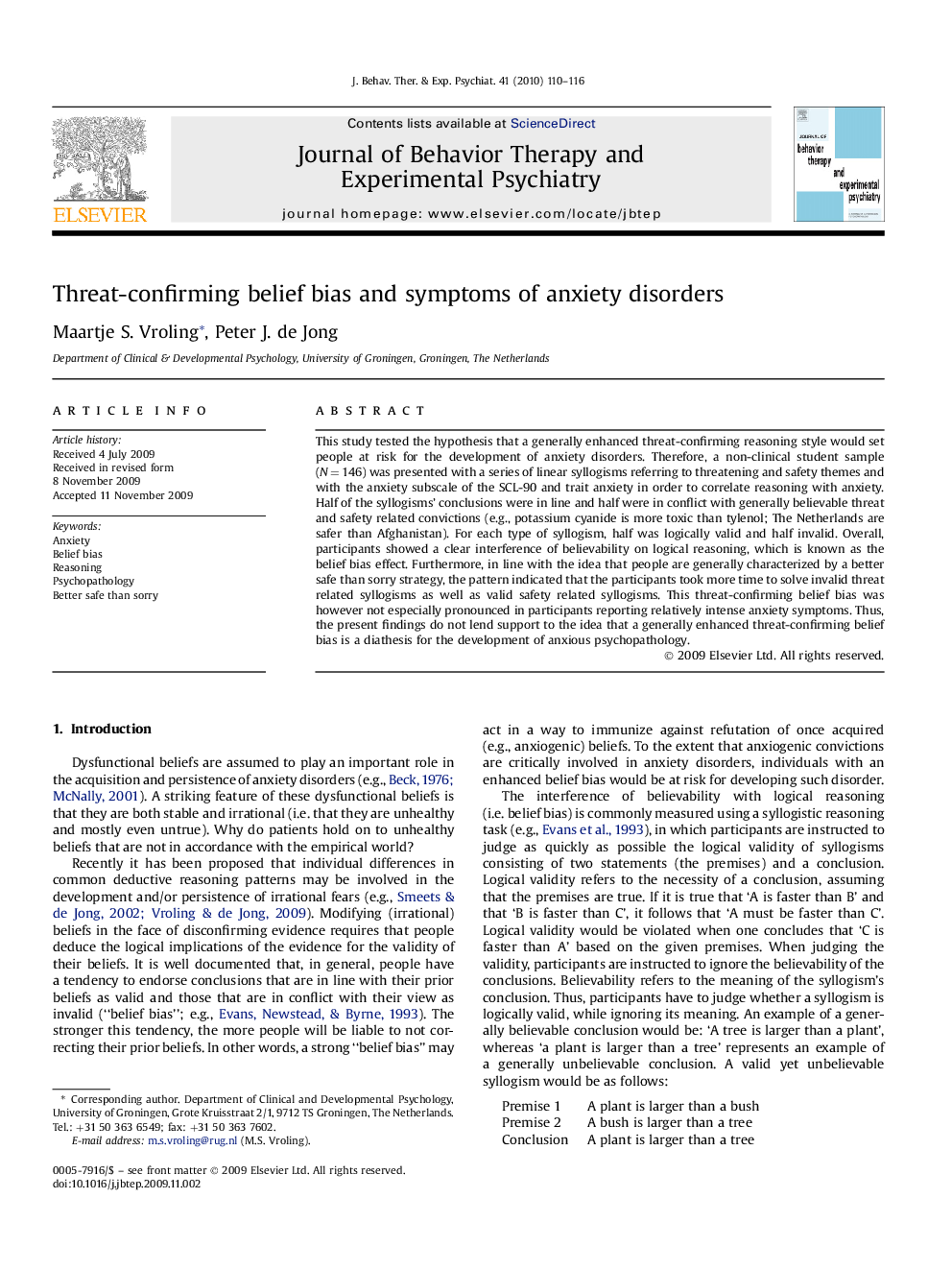| کد مقاله | کد نشریه | سال انتشار | مقاله انگلیسی | نسخه تمام متن |
|---|---|---|---|---|
| 910531 | 917471 | 2010 | 7 صفحه PDF | دانلود رایگان |

This study tested the hypothesis that a generally enhanced threat-confirming reasoning style would set people at risk for the development of anxiety disorders. Therefore, a non-clinical student sample (N = 146) was presented with a series of linear syllogisms referring to threatening and safety themes and with the anxiety subscale of the SCL-90 and trait anxiety in order to correlate reasoning with anxiety. Half of the syllogisms' conclusions were in line and half were in conflict with generally believable threat and safety related convictions (e.g., potassium cyanide is more toxic than tylenol; The Netherlands are safer than Afghanistan). For each type of syllogism, half was logically valid and half invalid. Overall, participants showed a clear interference of believability on logical reasoning, which is known as the belief bias effect. Furthermore, in line with the idea that people are generally characterized by a better safe than sorry strategy, the pattern indicated that the participants took more time to solve invalid threat related syllogisms as well as valid safety related syllogisms. This threat-confirming belief bias was however not especially pronounced in participants reporting relatively intense anxiety symptoms. Thus, the present findings do not lend support to the idea that a generally enhanced threat-confirming belief bias is a diathesis for the development of anxious psychopathology.
Journal: Journal of Behavior Therapy and Experimental Psychiatry - Volume 41, Issue 2, June 2010, Pages 110–116